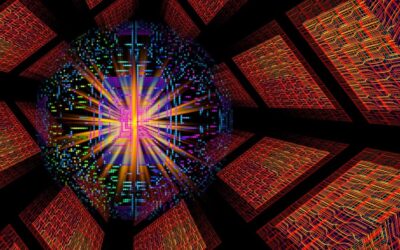Making quantum anomalies accessible to experimentalists could redefine next-generation technologies and device engineering.
Could the strange mathematics of particle physics help design tomorrow’s technologies? Does condensed matter theory hold the key to testing some of quantum theory’s most elusive predictions? Michael T. Pettes and collaborators at the Los Alamos National Laboratory and Naval Research Laboratory think so: they suggest a new way to explore the interface between theoretical quantum physics and materials science, in particular, proposing a shift in how the scientific community approaches quantum anomalies.
These anomalies emerge when classical field theory is quantized and some symmetries that are preserved in the classical realm are broken, leading to singularities known as quantum fluctuations or quantum anomalies. Despite their central role in modern quantum field theory, quantum anomalies have remained largely intangible to experimentalists. A major challenge is proving that observed signals arise because of these anomalies, and not from more conventional phenomena. Many of the predicted effects are subtle and difficult to isolate, requiring careful cross-disciplinary collaboration.
Writing in Advanced Physics Research, Pettes et al. claim that quantum anomalies, long considered the domain of theoretical physics, can now be measured and leveraged in real-world materials. They argue that these theoretical peculiarities may have practical implications for real-world devices built from topological quantum materials, meaning that they play a vital role for the design of next-generation quantum technologies and device engineering. “Condensed matter experiments on topological materials indeed provide a viable cradle for realizing otherwise esoteric quantum anomalies predicted by field theory,” says Avadh Saxena, co-author and condensed matter theorist.
“We want to invite new communities into this conversation,” says Pettes, an experimental physicist, to “showcase the potential for experimentalists to make a difference in an area closely tied to fundamental physical understanding” and also to explore “the potential for real-world impact through new applications that don’t yet exist”. One problem is linguistic: condensed matter physicists, field theorists, and materials chemists often speak different technical languages; the work from Pettes et al. therefore aims to bridge the language gap between different communities. “We are hoping that the introduction of this topic to a more materials-focused physics community can bring about new discoveries that leverage quantum anomalies and may ultimately be drivers for new technologies,” the authors state.
Looking ahead, two critical challenges remain: first, to conclusively observe the scale anomaly—a prediction still unverified in solids—and, second, to enhance the magnitude of anomaly-related signals to make them useful in devices. The authors suggest that tools such as materials informatics and artificial intelligence may be key to identifying new compounds with amplified responses.
As boundaries blur between high-energy theory and low-temperature lab work, quantum anomalies could evolve from conceptual oddities into design principles for next-generation quantum technologies, reshaping how we understand both matter and measurement.
For more on this topic, see the special issue “Quantum Anomalies in Condensed Matter“.
Featured image by Gerd Altmann via Pixabay.














